HOW I ENJOYED RUGBY WITH THE YC&AC (1979-1986)
(Editor’s note: I would like to encourage other old sporting Japan hands to follow Chris’ path and use lockdown to record their memories and send them to me.)
By Chris Baker
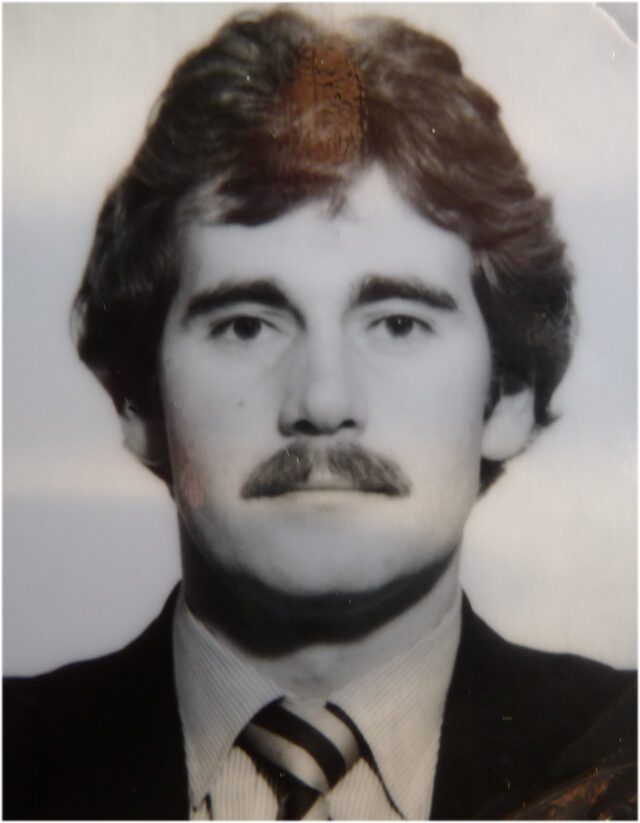
The beginning
During February 1979 whilst working for British Leyland as a Senior Instructor at their Allesley – Coventry, Dealer Technical Training Centre, I was asked by my principal if I’d be prepared to conduct a week long special training programme for three visiting technical specialists from Japan. Leyland Japan Ltd, a brand new 50/50 Joint Venture Company based in Tokyo and Yokohama (established with UK Government support), between British Leyland Limited UK and Mitsui Bussan KK Japan.
At the age then of 25 I was thrilled at this opportunity so eagerly agreed to take on the challenge which was to train the three Japanese LJHQ visitors in the comprehensive, theory, repair, maintenance, strip and rebuilt of the then brand new British Luxury Saloon car, the Rover 3500, manufactured at nearby Solihull near Birmingham.
None of the visitors spoke any English, and for me Japanese was a totally alien culture and language, nevertheless that did not stop us as the team hired a local Japanese lady with automotive experience to act as our interpreter. To cut a long story short, the programme was a complete success and I became very friendly with the team of three Japanese: Sakurai San, Nakajima San and Nakamoto San, and our Interpreter Reiko Kobayashi.
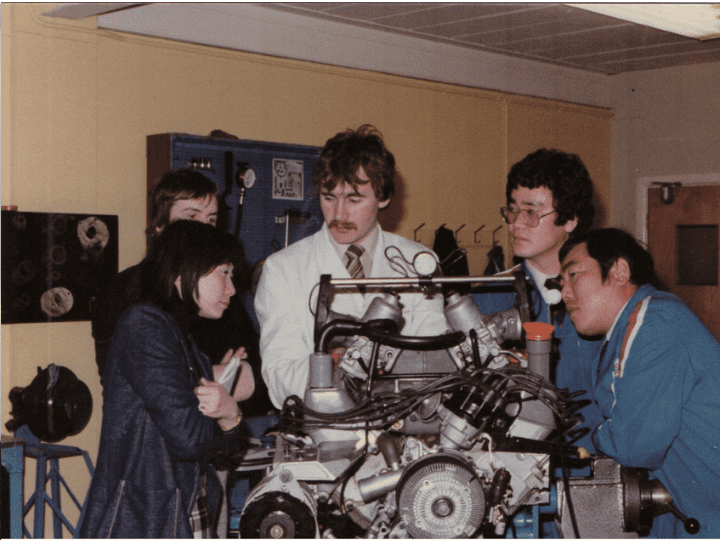
Several months passed, and once I again I was summoned to the principal’s office, this time he asked me if I’d be prepared to travel to Japan for a month to train all 55 newly appointed Pan Japan British Leyland franchised Dealers, who’d visit in teams of 14 from their respective regions for one week courses based at the Yokohama, the Import and Pre-Delivery Inspection Centre located at Shin Yamashita. Already a seasoned traveller in this role, albeit mostly in Europe, I was thrilled and honoured to take on this new and exciting challenge, especially to Japan a place I’d never dreamed of visiting.
On Friday morning in early March 1979, I boarded BA 006 bound for Japan. Up to Anchorage with cocktail drinks from the Jumbo Jets up-stairs bar, an hour stop-over, then over and down over the Baring Straits to Japan. This was the flight route back in the day due to the Cold War and being unable to overfly Russia.
On arrival at Narita Airport I was met by two foreign bosses representing the new JV Company Leyland Japan; John Morgan, Vice President and Cedric Talbot, Director Sales & Marketing, who chauffeured me in their company Jaguar Sovereign to the New Otani Hotel at Akasaka. What a fantastic high-rise Hotel it is, like nothing I’d ever seen before with stunning views over Akasaka Mitsuke and Tokyo Metro.
During the road journey in from Narita, I enquired about my weekend leisure and any sporting opportunities, especially Rugby my main sport, and to my delight, John said, I’m a member of The Yokohama Country & Athletic Club based down in Yokohama and I know the Rugby Captain, David Skillen. Why don’t I pick you up on Sunday around 11,00 am and we’ll drive down to Yokohama. I said great; unbelievable, and this was all before I’d done a day’s work in Japan.
We arrived at YC&AC on the Yaguchidai hill around 12,30 pm. The 1st Team Soccer match was still being played and it was a fine cool day with the single pitch looking great. Afterwards, the Rugby Gents (The 2nd Team) played which I watched from the touch-line sipping several Hot Rums. I was amazed that the YC&AC side was a very mixed bunch of foreigners (Gaijins), comprising of many differing nationalities, Brits, Aussies, South Africans, Americans etc. who played against, small stocky Japanese opponents, who were very fast, furious and noisy. If my memory is correct, the Japanese side beat the YC&AC Gents, but then came the 1st XV match against a different Japanese side named Acorn.
Just before half time, a YC&AC forward was injured with a leg strain; the Gents’ forwards were already into their 2nd beers, so I promptly put my hand up and said I’d play. I had no kit or boots with me but that was soon sorted out from earlier players, and within minutes I was on. It was a dusty and very hard fought match, being very close right up until minutes away from the final whistle. I then snatched a fast inside pass from the outside half next to our loose maul and sprinted away with my knees high, 15 metres later, bang, I was under the posts to score a try. That try was converted and YC&AC won the match.
I was now well and truly in so had already become part of that historic Rugby group, going on to play every weekend for the 1st XV during my month long business trip, which included my first ever Interport down at Kobe against KR&AC which we also won. Fantastic memories and Sapporo Gold Beer is now my favourite; so what a great introduction to Yokohama, YC&AC Rugby and Japan.
A new Job and a new horizon as an expatriate in Japan:
Having successfully completed my four week training assignment in Yokohama, I was summoned to the Head Office at Akasaka in Tokyo for a final de-brief and farewell party before returning to the UK. During the meeting that followed, initially with the two British bosses, they thanked me for my time and efforts over the last month and congratulated me on behalf the entire team for a job well done. They were particularly impressed by the rapport I’d created with the Leyland Japan Japanese Team and especially with the visiting dealer delegates, with positive feedback received from all quarters. Clearly being content in my work, at leisure and socially had been noticed as being a very positive personal trait. It was then that the bombshell was dropped when I was offered, if I wanted it, a full time two-year contract assignment as Leyland Japan’s, Resident Engineer, a role they’d been trying to fill for some months waiting for the right personality and skill set. They both agreed this offer was a lot for me to take in at short notice, although I agreed in principle that the offer sounded very interesting but would be subject to me giving it more thought and to discussing the opportunity with my family, fiancée and current employers.
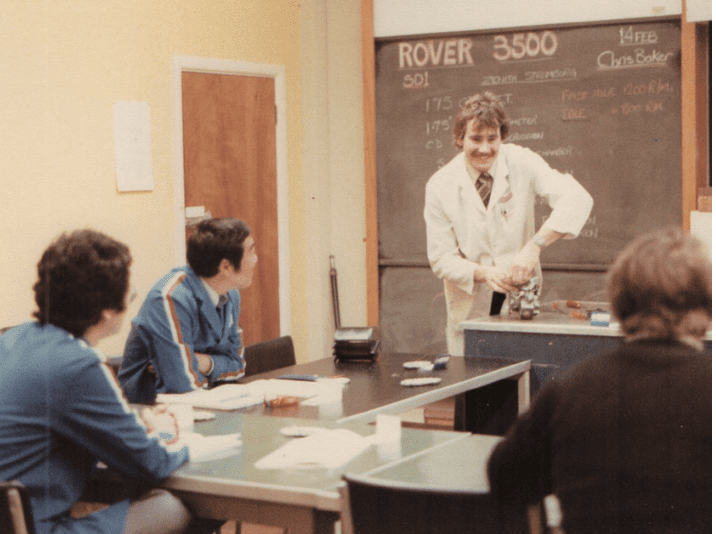
All parties back home subsequently agreed this would be a fantastic move and an exciting career opportunity, especially my then Finance Liz, so the next question was when should be get married? We agreed getting married would be a positive decision, so on September 1st 1979 we were married at Buckland Church near Aylesbury. We’d already purchased a brand new house a few months prior in Coventry, which we’d managed to corporately sublet, so were ready to head-out together to the Far East. Following numerous farewell parties, we finally flew out of London Heathrow bound for Japan’s Narita on September 28th, to a brand new life and a new home based at Honmoku Motomachi in Yokohama, only a ten minute drive from the YC&AC, a place that would play a significant role during our stay in Japan, which ultimately turned out with contract extensions to be a whole seven years abroad.
YC&AC and welcome to the Rugby Section:
Now firmly established as a British Expatriate living in Yokohama and working in both Yokohama and Tokyo for Leyland Japan, life in general was a stark contrast from being just another English couple living in the UK. In Japan we were something unique and quite special, being key representatives of both the company and the country, with all the added responsibilities that came with that status. Being a member of the YC&AC, or The Club as it was referred to, enabled Liz and I to participate in every possible sporting activity that took our fancy, and even partake in amateur dramatics. The Club was a hub for sports and social activities and a place which became a second home for us constantly meeting new people and saying farewell to others during countess welcome and sayonara parties.
Having already become an established face within the Rugby section from my business trip back in March, I was now formally welcomed into the YC&AC Rugby section by the Club Captain and Rugby Convenor, Messrs David Skillen and Jerry Hegarty. David worked for an English Language School in Tokyo named Linguarama, and Jerry ran Tokyo’s first British Pub, named The Rising Sun. The Rising Sun was a very small place, nevertheless became the unofficial HQ of the Rugby section located at Yotsuya, or some would say: “located in a small cupboard in Yotsuya”. Jerry being of Irish blood stock was in fact a full on London Cockney Sparrow who originally came to Japan to practice Judo, and he had all the wit, cheek and bravado of working man’s club, stand-up comedian. On reacquainting himself with me on my return to the Rugby Section, now a formal member of the Rugby First XV, he greeted me as follows: “Chris welcome back to Japan, also I’m delighted that you’ve brought with you the lovely Liz”. “So who is it you work for Chris”? I replied; “British Leyland (Leyland Japan), Jerry”, who in turn said, “Don’t you mean British Lay Off”. Laughter. “So what is it you do at British Lay Off Chris”. “I’m an Engineer Jerry”, “You mean you’re a Mechanic Chris,” ”Well yes, sort of”. “Right then, from now on you are the Mechanic who works for British Lay Off, and by the way, every time I see your wife my nuts need tightening!” So that was that, I was now officially the Mechanic in Japanese Rugby circles and remarkably still am to this day.

YC&AC Rugby – The Gents, The First XV and All Kanagawa:
During the Rugby season, we’d assemble at YC&AC early on Sunday afternoon’s with most players carrying big hangovers from late Saturday nights out in Roppongi, Shinjuku, Shibuya the Rising Sun, or in Yokohama at The Windjammer or Tavern in China Town. Sunday was always a huge sports day with six matches being played in succession on just the one grass pitch. Grass at least a the beginning of the season, slowly changing to a grass free mud or dust bowl as the season extended. Ladies or mixed Hockey was always up first on the flat turf, followed by men’s Hockey, then 2nd Team Soccer, followed by the First Team Soccer, and between each code change, posts and touch-line flags would be adjusted. Finally, it was the Rugby section. First up would the 2nd XV known affectionately as The Gents. The Gents comprised usually of a motley crew of mixed nationalities, some being Club Members and many not, even strays dragged in from bars the night before who agreed to play whilst under the influence of alcohol. A bit like The Press Gang in shipping parlance. If the numbers did not add up to XV, then it was those who were selected to play for the First XV to play in both games. Fortunately in those days, with most of the guys being in their mid-20’s, this was possible even with a hangover from the night before. Indeed, several of the Tokyo based First XV guys, would also play the odd game of Squash rather that loose their ranking on the Squash Ladder. Almost without exception, baring overseas touring sides and Interport fixtures and the odd Embassy fixture, the YC&AC opposition was against 100% Japanese sides. To name a few University sides: Keio, Meiji, Doshisha, Waseda etc. and Old Boy Clubs including: Acorn and Kurumi plus many more. Because YC&AC had their own ground, shower facilities and a nice Breezeway Bar the opposition always came to Yokohama, so away games were few and far between. The KR&AC Kobe Interport was an exception alternating each year, plus the odd closed season domestic tours when the club travelled out into the countryside to pay under the guise of The Jijirians, meaning Old Men’s Rugby. These tours often in the summer months, were great fun sometimes located near a river, or at a country farm ranch, culturally unique when compared with city life in downtown Tokyo and Yokohama.
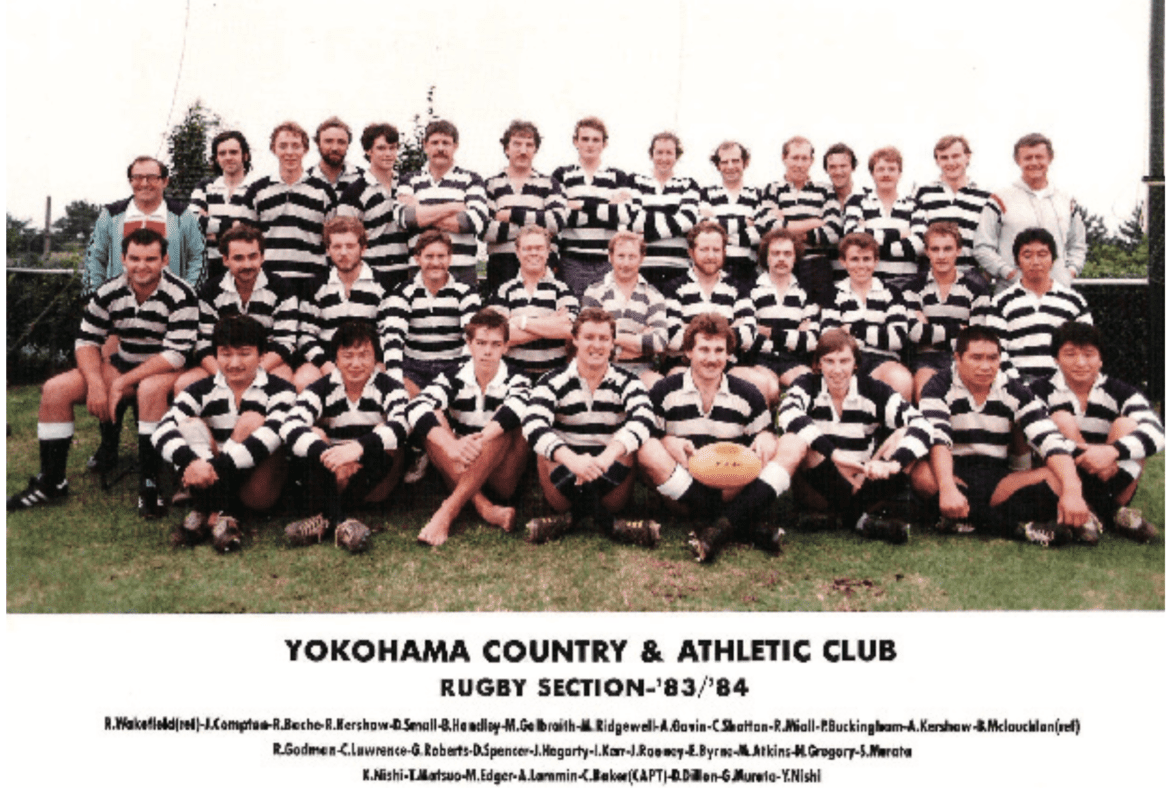
The First XV Rugby team, of which I was Captain in 1983/4, took things a tad more seriously and had much more talent within their ranks, although like the Gent’s they too will always have been on big Saturday nights out,but had an extra hour to recover before playing at 3:30 pm. The First XV was usually a United Nations team, with players from all over the world. Mostly English guys with some Welsh, Scots and Irish, plus Aussies, Kiwis, Yanks, Canucs, South Africans, French etc. who’d come from all over to play Rugby at YC&AC. Many were not club members though, so it was often tricky for the captain to field a strong side without extorting some form of match fee per game to keep the Club Committee Members onside.
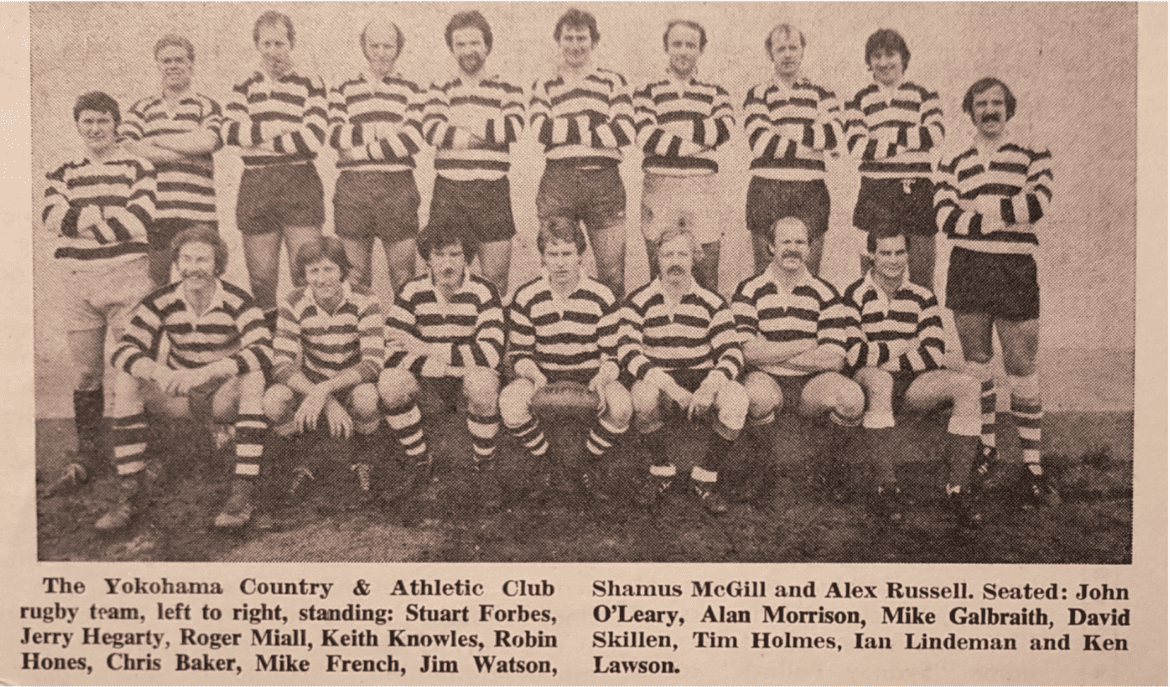
Typically the Gents lost about 50% of their matches, but the First XV did much greater winning more like 90% of their fixtures. This was due mainly to their better rugby skills and physical size, as in those days the average Japanese opposition member would have been on 30% small, although they did made up for that with, speed, maneuverability, noise and being able to slip under half tackles. Because this mismatch in physical size, when it came to the National Inter-prefectural Knock-out Tournament, selectors and spotters for All Kanagawa, the prefecture which YC&AC played in, would come to YC&AC to seek support in the form of bigger players. In 1983 four of us were duly selected to play for All Kanagawa where the matches were all to be played at Chichibunomiya, the National Rugby Stadium in Tokyo. Myself and Mike Galbraith were both selected as Second Row Forwards, with David Skillen and Robin Hones selected as crash centres. In-spite of weeks and weeks of hard training with our Japanese team mates, we eventually got knocked-out in our opening encounter with Iwate, the eventual Tournament winners. They say East is East and West is West and never the twain shall meet, and that was certainly the case in our All Kanagawa training and match play, as the opposing styles of Rugby simply were not complimentary, for sure we won plenty of ball in the lineouts, only for that possession to be squandered.
But Hey Ho, it was great fun and an honour to be selected.
YC & A C Interport clashes & The Cabaret:
The annual Interport fixtures as they were known, featured the two famous Japanese Port City Clubs of Yokohama and Kobe: The Yokohama Country & Athletic Club (YC&AC), and the Kobe Regatta & Athletic Club (KR&AC), combined with The Kobe Club.
Annual clashes featured groups of combined key sports that were, regularly played by both clubs in the appropriate seasons. These were contested at the highest level with the fixture venues alternating each year, home and away, between Kobe and Yokohama cities. Although four hours apart by Shinkansen Bullet Train, these annual fixtures were highly contested local derby type clashes, where the silverware shields and pennants exchanged were highly coveted by each Club. In the Rugby match especially, where the respective 1st XV’s fielded their strongest teams, these comprised mostly of talented expats playing in their prime, plus on occasions the odd exceptional Japanese. During my tenure, ex All Japan Prop Forward, Gonji Murata, made appearances as a very tough and formidable Club player.

The Interports were important in more ways than just sport; they were also a great opportunity for the members of each Club to socialise and enjoy a fantastic weekend away together with wives and partners. In the history of both clubs, with the exception of two World Wars and The Great Kanto Earthquake, Interports had been contested without a break, although nowadays with corporate membership numbers dwindling, some sports are no longer able to field regular teams, which is a great shame and a sign of the times.
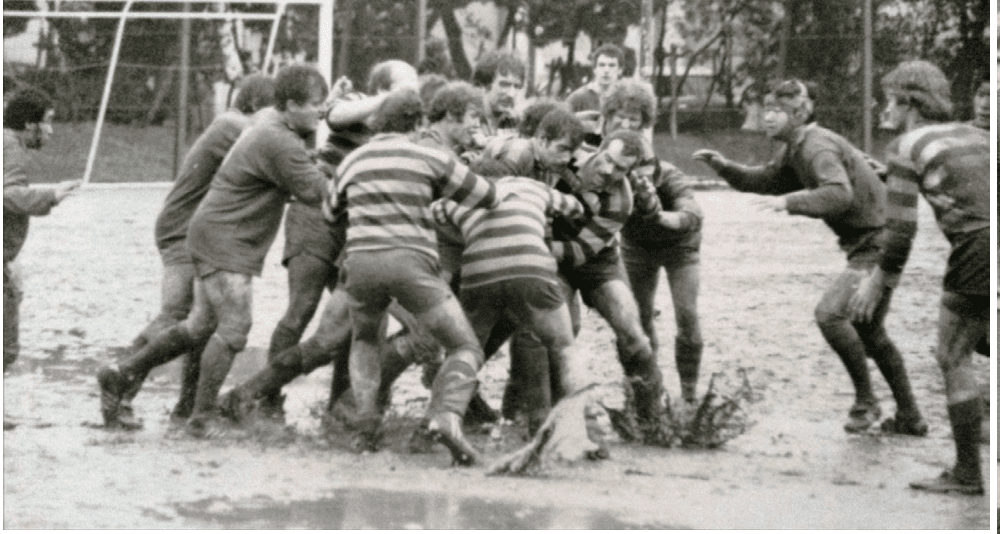
It’s fair to say that in addition to friendship and camaraderie off the field, these annual encounters were almost without exception very roughly contested brutal affairs, not dissimilar from any local derby Cup-Final clash back home. The referee and linesmen certainly had their work cut-out, dealing with fully pumped-up players and baying spectators from both sides, with so much at stake. Pride, club honours, silverware and of course individual macho reputations to up-hold. On many occasions games were frequently impeded by on-field injuries (both off and on the ball incidents), meaning the subs bench was always fully deployed. Additionally, trips to the local hospital were sometimes needed to tend to the occasional big hits where claret was awash. That said, at the end of every contest, all left the battle-field friends and comrades, with opposite numbers quick to ply their bloody opponent with copious amounts of healing and cleansing ales through into the wee hours.
Turning back to the social side, the host teams each year had the responsibility to put on a lavish Black Tie Ball with all the pomp ceremony and formality of a civic reception. The halls would be decked and tables laid out for a sumptuous silver service banquet followed by top table speeches and awards being handed out to the victors of the day. Off course there would be no shortage of drink nor reasons to raise a glass, with events often going on till dawn at local back street hostelries of ill repute.
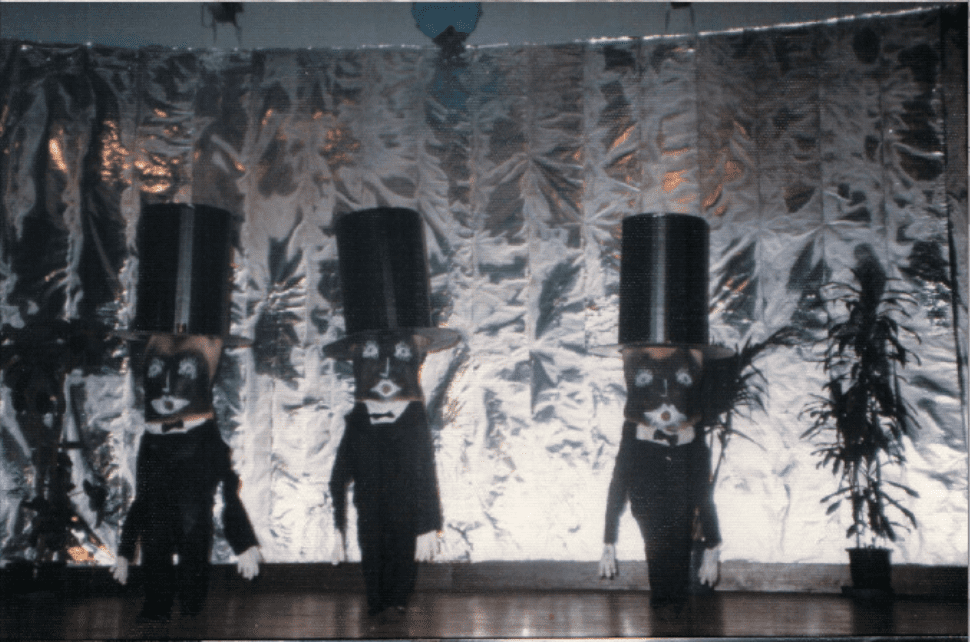

Following the formalities, the main stage would then be set for the fabled Cabaret. Not dissimilar to Concert Party japes put on for the troops during WW2, the host side were expected to lay on a 30-minute cabaret of the highest order, featuring members of their own teams. In most cases, appearances featured a gamut of differing comic displays, including everything from ballet, stand-up comedy, comic skits, songs, poems, dance Routines etc. you name it, all being done with fantastic improvised costumes and home-made sets. Quite often preparation, planning and rehearsals for these cabarets would commence literally months prior to the performance, as putting on a first class performance was almost as important as being victors on the field of play.
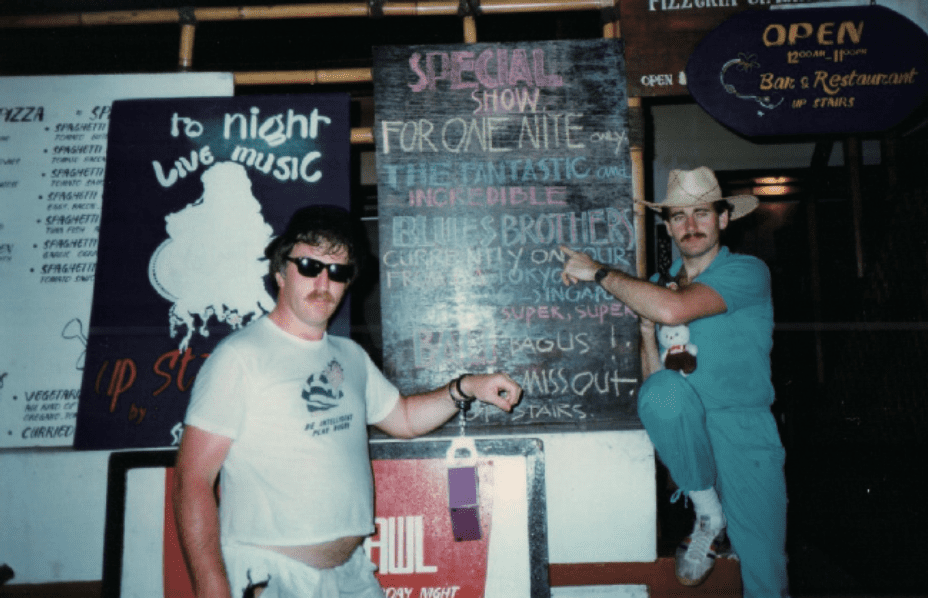
Of particular note was the occasion when I was YC&AC Captain during 1983 where we played a home. We had a whole stack of Monty Python and other comic material to work on and had been hard rehearsing on our version of “Flash Dance” for many weeks. Jerry Hegarty our Rugby Convenor and Hooker for this set was playing the main part of the girl dancer. Following the main dance routine flourish, it ends with him sitting on a chair centre stage, he then pulls on a rope and is drenched by two gallons of cold water hidden up in the stage rafters. As it turned out, Jerry missed playing in that Interport, as during the final dress rehearsal, he got a spiral fracture of his leg when shocked by the cold water, which he was blissfully unaware of until the enormous splash, he was expecting ticker tape………………………….Thankfully Gonji took his place on the field that day and we narrowly won the match. Happy days and what fun and fond memories.
Finally, it would be remiss of me not to mention it, but YC&AC always dreaded playing away at Kobe, not because we hated travelling down on the train, nor because is always rained, but because the playing surface at KR&AC was so appalling. Located in a city centre location formally on a place with tainted ground, the surface was covered in multi-sport cinder grit, so was not really ideal for playing Rugby on, especially when combined with heavy rain and poor drainage. Heavy puddles would form so scrummaging, rucking and tackling under these conditions was not nice. Grit getting everywhere, ears, nose, mouth shoulders etc. more-over going down at pace usually removed flesh from exposed knees and elbows which would always become infected, even after a hard scrub in the showers. Those wounded in this action would also be rewarded with blood red skin stain markers left by Mercurochrome, a bright red surgical medical spirit used by the medic during First Aid procedures.
Overseas and domestic YC&AC Rugby Tours and the Hong Kong 7’s:
As is customary for all Rugby Clubs around the world, the Easter Tour is always a hugely anticipated annual event. For YC&AC this was no exception, certainly during my tenure where we travelled far and wide to numerous exotic locations, playing both local and expatiate opposition.
Although ambitious and comparatively expensive affairs, these tours were often partly sponsored by large corporate companies, the club themselves, also sometimes by the employers of players themselves, with the subsidies being quite generous. The 80’s was known as “The Bubble” period in Japan, so many companies were actually doing very nicely, so why not sponsor the Club in lieu of paying Income tax? This meant that for some of the younger or less well-off players had an inexpensive Rugby Tour holiday.
Destinations included: Hong Kong, to not only watch the International Rugby Sevens Tournament, but also to play 15’s beforehand as a pre-curser warm-up before travelling south for our formal tour matches. Manila in the Philippines (a repeat favourite destination), Seoul in South Korea, Jakarta and Bali in Indonesia. Notable opposition included: The Hong Kong Police, The Seoul Survivors, The Republic of Korea Army (ROK Army), The Manila Nomads, Clarke Air Force Base Select XV (at Angeles City), and ISCI, The International Sporting Club of Indonesia, based at Jakarta. Our Bali leg was simply for R & R (Rest and Recuperation), albeit with plenty of action down on Kuta Beach Bar, where we put-on an impromptu version of “The Blues Brothers” with “Minnie the Moocher”, as recently performed at the Interport Cabaret.
Typical of all Rugby Tours, an event name, for example: “Mega Rip” was created in advance, supported by creative colourful Tee shirt apparel, usually supplemented with funny head-gear and or other props to be worn at all times. A tour code of conduct was normal, as was individual tour names. Any code deviations were dealt with heavily under the auspices of a kangaroo Court. During the course of the tour, all indiscretions were initially confined to monetary fines put into “The Sock”, nevertheless nothing was ever missed for the final Kangaroo Court Session, where heinous crimes were met with very harsh justice, delivered by the presiding Judge, his snitches, prosecution and defence attorneys. All in all great fun, but extremely messy affairs.
When not doing the serious stuff of playing toughly contested Rugby matches, day time fun was enjoyed at the pool-side or down at the beach or at numerous bars. At night, the tourists made a Bee Line for the bright lights, numerous bars and night clubs which stayed open all night, always full of pretty local ladies. We even managed to learn some of the local language e.g.: bagoos, pita bagoos, and pom pom, etc. Certainly not the best preparation for a hard fought matches playing under the afternoon sun at 30 + C with 80 % humidity. Mad Dogs and English Men and Noon Day Sun springs to mind.
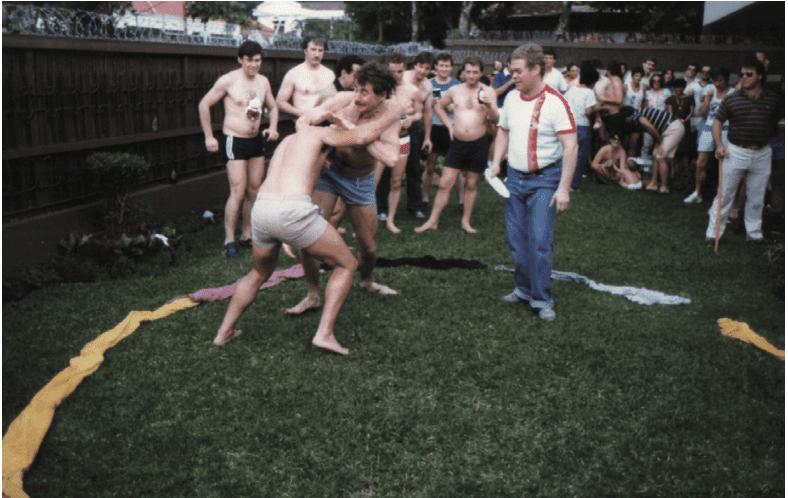
Post-match excursions were always eventful; one in particular was a rain forest based Hash run. Nothing in the rain forest to put down chalk marks as no metaled roads anywhere, so instead Telex Machine punch paper waste was scattered in abundance to guide the route through the sticks. Not unlike the Hansel and Gretel fairy-tale with breadcrumbs.
Running through a rain forest, in and around primitive villages at dusk was certainly quite different and as you can imagine with snakes, spiders, insects and wild animals everywhere, you needed to be sure footed and well-focused. Finally, we eventually hit a clearing as the sun dropped behind the horizon all sweating buckets, where there was a huge tree lined circle, illuminated by Tilly lamps. Centre stage a huge metre cube of solid ice. Beer and food was provided in abundance by the opposition team members, then sadly for those who stood-out for what-ever reason during the tour, a session seated on the ice throne was just reward, naturally with pants down. Icy duration on throne being variable, subject to the delight of the madding throng getting steadily more inebriated. Happy Days.
Domestic tours followed a similar format, although took place during the grey heat and high humidity of the Japanese summer. YC&AC Tourists travelled under the banner of “The Jijirians” (Japanese for Old Men), and travelled by train to far flung countryside retreats in rural Japan, usually located near large rivers or farm ranches. In contrast to the International Tours, these were totally Japanese affairs with very few, if any of the opposition, having any command of the English language. Language not being a problem however, as all of the guys would be keen to practice their Japanese (although feminine biased Japanese), picked-up from their girlfriends, thus causing much hilarity for the local ruggers. Playing against these Japanese sides was always a fast, fun, frenetic and noisy affair, but played in a great spirit. Basically if we let them have the ball we’d get stuffed, so our play tended to be focused on scrums, rucks, and rolling mauls, maintaining possession at all costs, Jijirians not being the fittest or the best players YC&AC could provide.
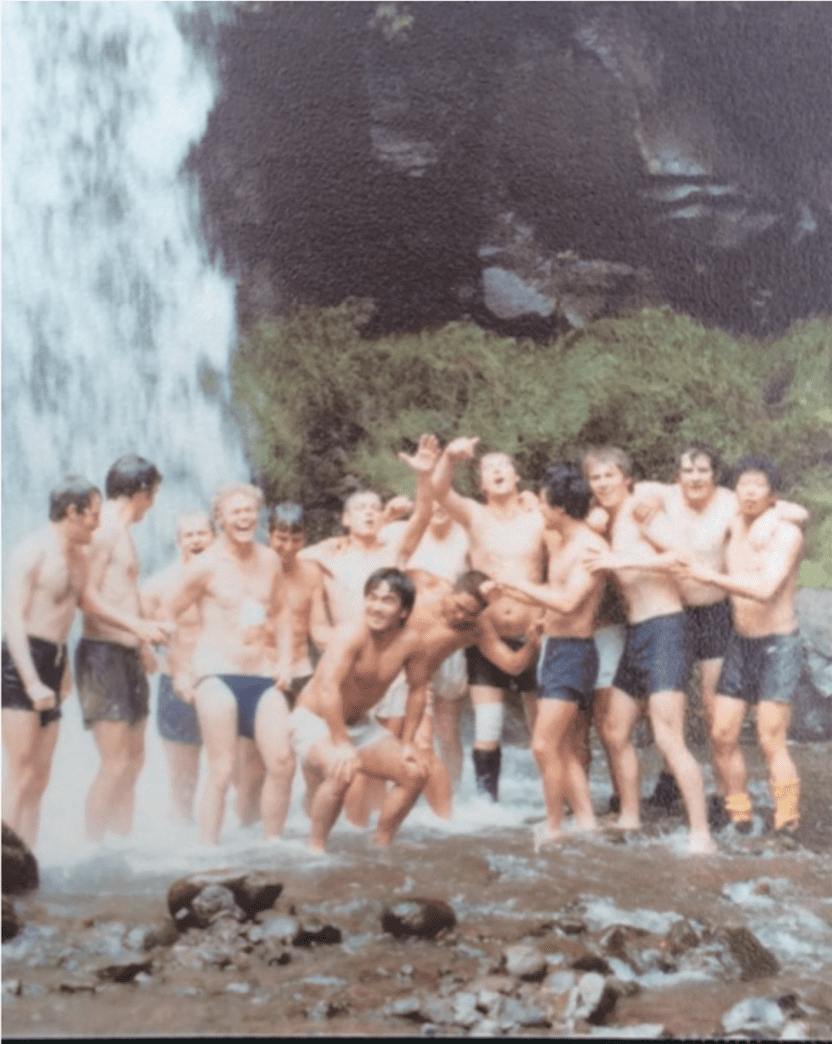
After match affairs however were great fun as the Japanese love to socialize, eat, drink a lot, get drunk and sing etc, so just like the rest of us this was never a problem with Boat Races being common place, albeit with a twist. One time the beer glasses were loaded with a fresh egg, still shelled then topped-up with beer, and another time, the beer glass was half filled with tiny live eels, (Elvers), before being topped-up with beer. At this, immediately the glass fizzes with effervescent eels thrashing around, then it’s down in one. From memory, we never did win one of these special Boat Races.
Sayonara:
Sadly after almost seven years in Japan, following what started as a two year contract assignment with Leyland Japan, it was finally time to pack our bags and return to Blighty bound for Jaguar Cars Limited at Coventry. Living in Japan had been a truly fantastic experience, being totally different, so rewarding, educational and much fun, as were the connected opportunities to travel extensively around South East Asia and in meeting so many different people, both off and on the field of Rugby. So after numerous Sayonara Parties held at Yokohama, our home for the duration of the assignment, it was finally time say Sayonara to the YC&AC Rugby Section, and where better a venue than that small cupboard in Yotsuya, AKA the Rising Sun in Tokyo, Japan’s Oldest British Pub, run by mine host, “Shag” Jerimiah Hegarty, our Rugby Convenor and close friend from day one.
Not entirely sure how it happened but the boozer was crammed full to the gunwales with not one spare standing space in the house. David Skillen took on MC duties in his own inimitable style, not missing any opportunities to pick-up on my many indiscretions witnessed over the preceding seven years on and off the park, and much to the hilarity of the assembled throng of inebriated Ruggers together with Jerry the master of the put-down and one-liners, on fine form in handing over to me, a signed by all a memento of a leather Gilbert Rugby Ball. Finally no Sayonara party would be complete without Knocker Knowles, delivering word perfect recital of: My Sisters Black Cat.
A……A, is at A,
L……. L, is for Long. A, Long,
S…… S is for Strong, A long, strong, etc. etc.